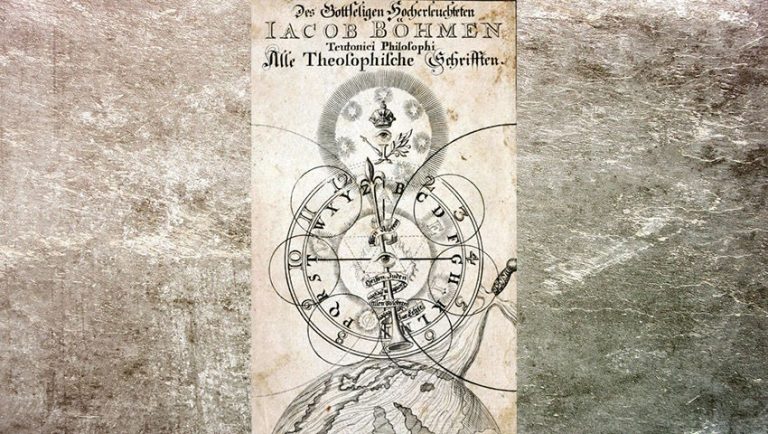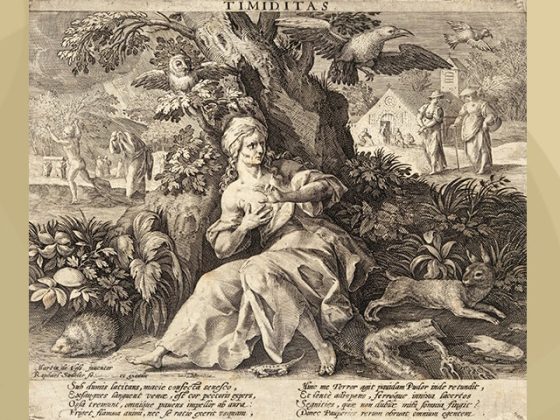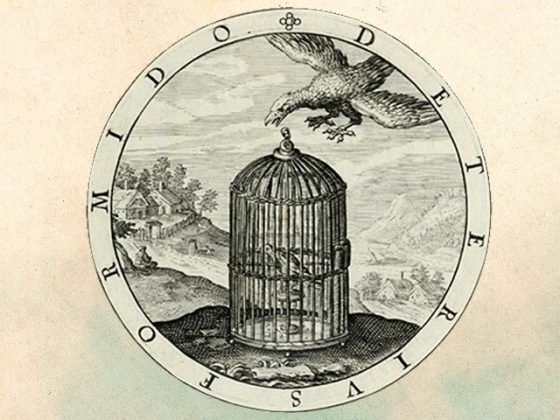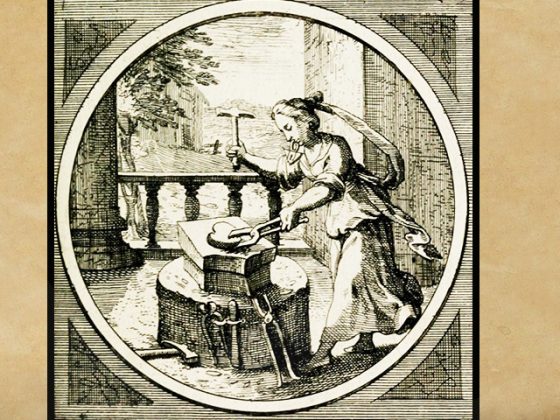Dearest friends:
I give you the message contained in this engraving that belongs to the frontispiece of the book called…
…DES GOTTSELIGEN HOCHERLEUCHTETEN
IACOB BOHMEN ALLE THEOSOPHISCHE SCHRIFFTEN
─'All the Theosophical writings of the blessed and enlightened Jacob Böhme'─
Jacob Böhme (1575-1624) was a German mystic. A shoemaker by trade, he did not have access to academic training and acquired the knowledge of his time in a self-taught way. He left behind an extensive philosophical and religious body of work that made him famous far beyond the German-speaking world. Since he used exclusively the German language instead of Latin, he is considered the philosophus teutonicus.
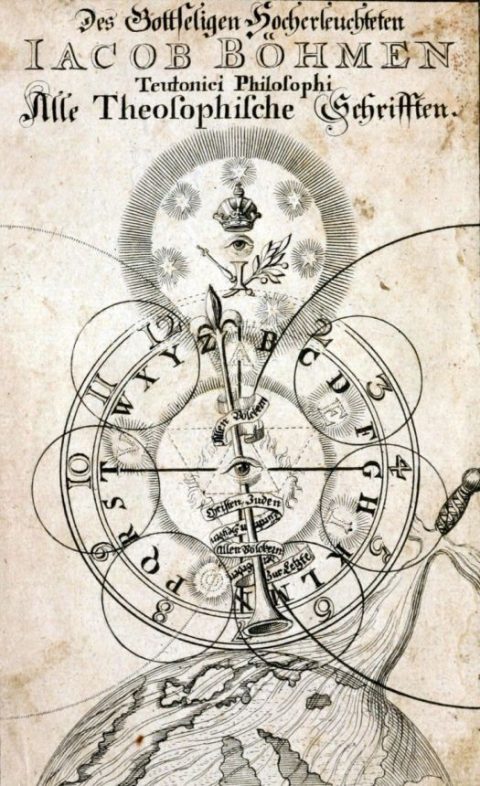
It must be said that Jacob Böhme was a Teutonic philosopher and his treatise was published in 1682. The drawing is believed to have been made by Dyonisius Andreas Freher, a German writer who lived between the years 1649 and 1728 and was a lover of the works of Jacob Böhme.
To begin our description, we must fix our attention, first of all, on the upper part of the engraving. In this very section appears before us a radiant circle containing a crown, beneath which appears the eye of the Almighty, and above it a crown representative of the omniscience of the Creator. Around what has been described above there are six stars forming a circle, which is actually completed by a laurel branch and a staff of command, both symbols of power and glory.
Next, we will find ourselves between two circles, within which there are numbers ranging from number 1 to 12. It should be noted that the number 1 is placed on the olive branch and the staff of command because the supreme unity IS THE BEGINNING AND THE END OF ALL THAT EXISTS. The numbers from 1 to 12 allegorize the twelve hours of Apollonius of Tyana. Few people have understood those hours because they contain the Secret Path that, thanks to divine mercy, the blessed Master Samael Aun Weor revealed to us in his works.
The two circles represent eternity and time, respectively. Eternity is inhabited by liberated beings and time is inhabited by humanities that have to find a way out of the labyrinth that make up their existences.
Next, we must observe a trumpet that begins as a fleur-de-lis –a symbol of the three primary forces of creation– and ends, indeed, as the mouth of a trumpet. What does it all mean? Answer: The glory of God is the very Word that sets His work in motion: creation.
Closer to the centre of our engraving we will find another radiant circle within which is found, precisely, the Star of Solomon. In the center of such a star we will again find the eye of the divinity. Why? Answer: First of all, that other radiant circle gathers together those who have been able to find the triumph of the Great Philosophical Work —the Philosopher's Stone— and that is what the Star of David or Seal of Solomon symbolizes. However, the divine eye present there allegorizes the BEING already incarnated in the victors of the inner work. In this way the divine has become human and the human has become divine, that is the mystery of the Intimate Self-Realization of our BEING in us.
In the second circle, from top to bottom, we can see the letters of the alphabet, the symbol of all the languages of the world. However, we must point out that the letter A is made up of a triangle drawn as if it were something energetic, and also the letters V and E. These three letters make up the word AVE. But, on the other hand, we can visualize the letters IO, all of which reminds us of our most holy inner Mother, symbolized a thousand times by the letters IO. We can see this in the word RAM-IO, which is the Gnostic way of mantrically invoking our Divine Lady: Devi-Kundalini.
It is necessary here to notify all of you, esteemed reader, that the syllable IO is also the symbol of the Egyptian RA, consisting of a circle with a dot in the center, and this design allegorizedthe solar Fire, since it is the lingam embedded within the yoni, that is, the IO.
Further down we see a flaming sword that sends fire to the earth. That sword is the expression of the universal Fire of the same divinity trying to arouse interest within human societies, in other words, trying to provoke the RELIGARE of man with his original identity –namely: the BEING–.
I now give you a few sentences that must be reflected upon:
“To defend or deny our faults when we are reprimanded is to increase them.”
La Rochefoucauld
“The defect is a monster that does not procreate.”
Pythagoras
“He who endures my faults is my master, even if he is my servant.”
Goethe
“He who knows his defects is very close to correcting them.”
Aristarco
“Sometimes it costs much more to eliminate a single defect than to acquire a hundred virtues.”
La Bruyére
SUB SPECIE AETERNITATIS.
─‘From the perspective of eternity’─.
KWEN KHAN KHU


